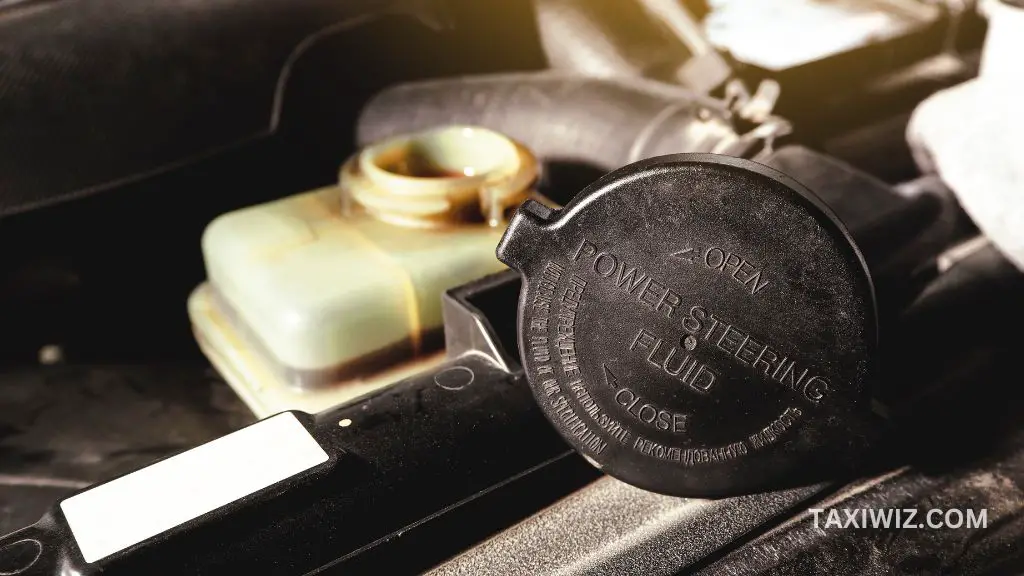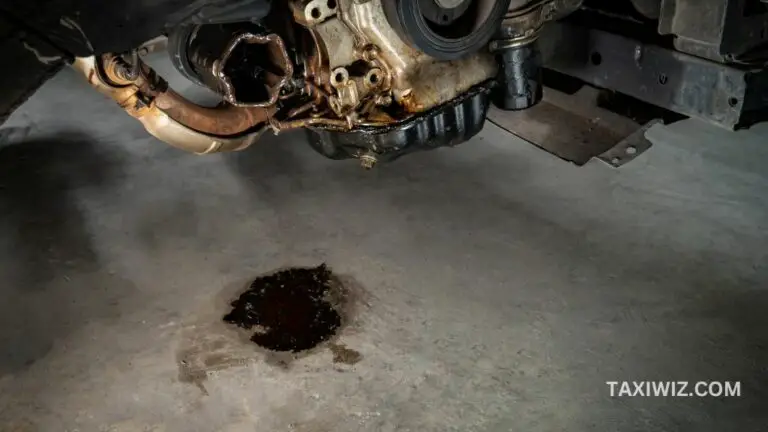Power Steering Fluid Leaking Fast: (Causes and Solutions)
Power steering fluid is a crucial component in modern cars that helps make steering easier and smoother.
However, when power steering fluid starts leakingfrom the car, it can lead to various issues and affect the overall functionality of the steering system.
Cracked or loose hoses, failed power steering pump, overheating, badly worn seals or gaskets, lose or damaged fittings, and cracked reservoir can cause fluid to leak faster.
In this article, the potential causes of power steering fluid leaking fast, the signs to look out for, and the importance of addressing this problem promptly is briefly described.
What Is Power Steering?
A vehicle’s power steering system utilizes engine power to reduce the amount of work required to turn the front wheels. It is a system that enhances the driver’s ability to control and maneuver a vehicle.
Hydraulic and electric systems are available for power steering.
- Hydraulic power steering is a system that uses pressurized hydraulic fluid to aid in vehicle steering.
- An electric system detects the amount of force a driver applies to the steering wheel with the use of an electric motor and sensors, and then adds the appropriate amount of aid.
What Does Power Steering Fluid Do?
Vehicles using power steering systems require a unique kind of hydraulic fluid called power steering fluid. It’s an essential component since it helps the driver move the wheel with minimal effort. To create a hydraulic connection between the steering system and the front wheels, this fluid is used. The fluid is used to lessen the effort required to turn the wheels.
The hydraulic fluid also serves as a lubricant for the power steering system’s moving components. It keeps the power steering gears and pumps free of foam and protects them from corrosion.
What Color is Power Steering Fluid?
Power steering fluid is usually a reddish or pinkish color. It’s important to keep in mind that the color can vary significantly based on the brand and type of power steering fluid used.
Power steering fluid can come in a variety of colors, including those listed below.
| Power steering fluid color | Description |
|---|---|
| Red, Pink, Or Clear | Power steering fluid is typically a bright red color. However, manufacturer may change the color to pink or clear fluid. |
| Milky Or Foamy | Water in the power steering system might influence handling if the fluid is milky or frothy in appearance. |
| Black Or Brown | If power steering fluid is gone through degradation and is very old will look brown or black. |
| Yellow | A leak in the engine’s coolant system could cause the power steering fluid to turn a muddy yellow color |
Where Does Power Steering Fluid Stay on Car?

You’ll find the power steering fluid reservoir under the hood, normally on the passenger side but sometimes on the drivers. White or yellow containers with black caps labeled “power steering” or “steering fluid” are the most common.
What are the Symptoms of Power Steering Fluid Leaking fast?
It’s important to know that a power steering fluid leaking fast isn’t the only sign of a problem. The primary concern should be locating the source of the issue before it worsens.
The good news is that you may easily recognize the signs of a power steering leak. A power steering fluid leak is likely present if you see any of the following symptoms.
Puddles or drips under the car
Check for fluid leaks or puddles under the front of the car, especially near the power steering pump and hoses. The color, smell, and feel of power steering fluid are all distinctively greasy and reddish or dark.
Ignition Noise
The engine’s noise can also be used to detect power steering fluid leaks. A leak in the power steering fluid system can be identified by a squealing noise coming from the steering pump upon starting the vehicle. The noise may be followed by a warning light on the dashboard.
Grinding Or Whining Noise
The power steering pump may make strange noises if the fluid level drops too low owing to a leak.
Decreased Steering Performance
Difficulty in controlling the car is one of the most obvious signs of a power steering fluid leak. The steering wheel may become more difficult to turn than usual.
Vibrations or jerks in the steering wheel
Vibrations and jerking are often the result of a lack of power steering fluid, which can be the result of a leak.
What Causes Power Steering Fluid Leaking Fast? (Easy fix included!)
If your vehicle has a power steering fluid leak, you must determine the cause and take the necessary measures to repair it. There are a number of potential causes for a power steering fluid leak, including a defective hose and a worn seal.
1. Worn-Out Seals or Gaskets
There are many gaskets and seals in the power steering system to keep fluid in. Leaks can occur if these seals wear out or are damaged over time.
The Fix:
- First, find a safe spot to work before starting.
- Seal repair requires removing the pump from the engine and then the pulley.
- Clean the seal-setting shaft. Check the shaft for dents and scratches. Slide the seals across the shaft to the pump housing with power steering fluid. Tap the seal carefully with a hammer to secure it to the housing. Avoid seal damage.
- After power steering pump seal repair, secure the reservoir.
2. Leaking Power Steering Hoses
The power steering hose should be inspected for fluid leaks as a first step. Pumps in power steering systems send fluid through hoses to the steering gear or rack. Cracks, perforations, or loosening of these hoses over time might cause leaks in the fluid supply.
The Fix:
Tightening the loosened seal or wrap a Teflon tape across the thread to prevent the leak. If the hose is leaking, you should probably just get a new one.
3. Using Wrong Type of Power Steering Fluid
Each car manufacturer recommends power steering fluid. The improper type can harm power steering. It also wears down power steering components, causing leaks.
The Fix:
Immediately get some new fluid in there. You need to change the fluid out for the right kind and then continue driving. This will prevent any additional harm. If you want to know which fluid is best for your car, look in the manual.
4. Problems with the Steering Rack or Gear
The steering gear or rack, which translates the rotational motion of the steering wheel into linear motion for the wheels, might develop leaks if its seals or components are damaged.
The Fix:
When the reservoir gets too full, remove the extra liquid with a turkey baster or syringe.
5. Cracked or Damaged Power Steering Reservoir
Because of age or accidents, the power steering fluid reservoir may crack and leak its contents.
The Fix:
If the power steering rack fails, replacement is unfortunately your best bet. If you’re looking to save money and the environment, a remanufactured steering rack may be used, but before making the switch, you should get an expert mechanic’s advice.
Is It Possible To Drive With A Leaking Power Steering Fluid?

Even if it’s technically possible, it is recommended not to. The explanation is straightforward; as time passes, these leaks become increasingly hazardous, and the automobile may suddenly come to a stop in the middle of the road.
Furthermore, driving in such a manner might be dangerous because you have no idea what other drivers will do or what to expect.
How Much Does A Power Steering Leak Repair Cost?
Fixing a leaking power steering fluid leak typically costs between $500 and $650. How much it costs to fix depends on which components are broken. Either a single part or the whole system could need to be replaced.
The typical power steering repair prices are given below:
| Components | Cost to fix |
|---|---|
| New Hose | $60-$150 |
| Leaky Power Steering Pump | around $220. |
| Leaking Power Steering Line | $60-$150 |
| New Pressure Valve | about $10 |
Rates of pay for labor range from $40 to $200 per hour.
Related articles:


![Car Water Pump Bearing Noise [9 Fixes Explained]](https://taxiwiz.com/wp-content/uploads/2023/08/Water-Pump-Bearing-Noise-768x426.jpg)


